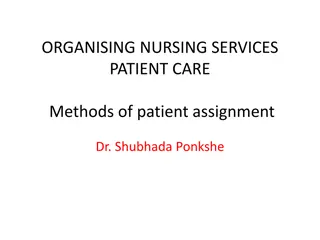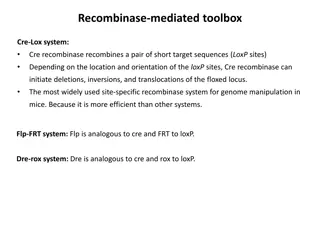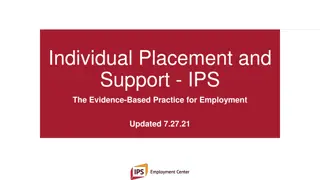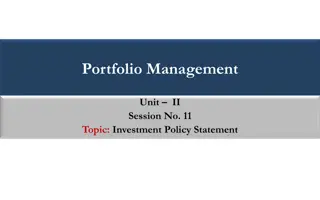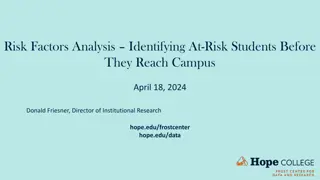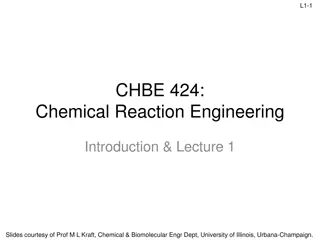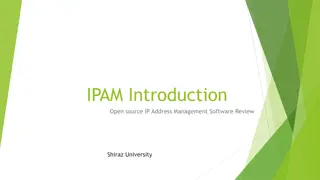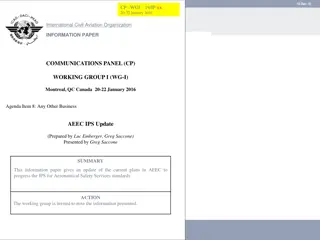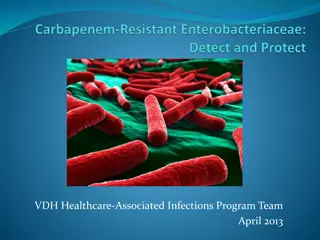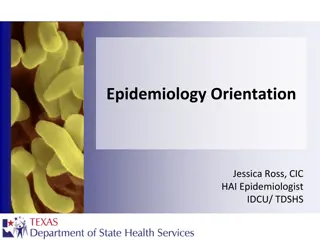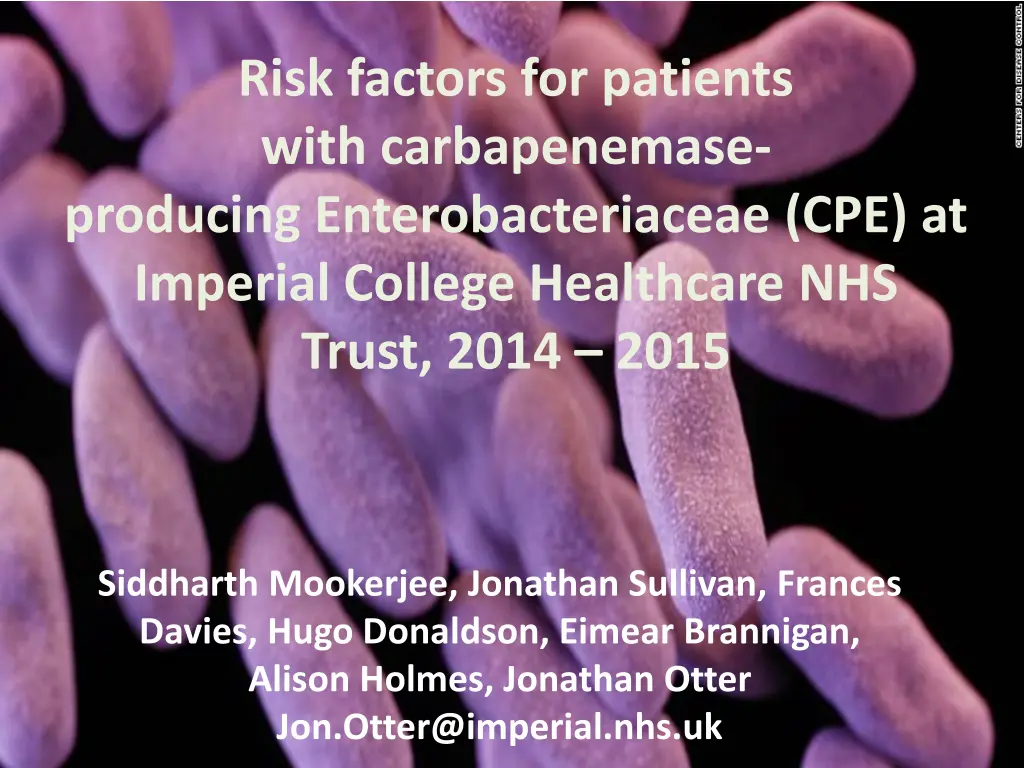
Understanding Carbapenemase-Producing Enterobacteriaceae (CPE) Risk Factors
Explore the risk factors for patients with Carbapenemase-Producing Enterobacteriaceae (CPE) at Imperial College Healthcare NHS Trust in the years 2014-2015. Learn about the key resistance mechanisms, European perspectives, surveillance methods, patient profiles, and distribution patterns of CPE. Stay informed about the threat posed by CPE and the implications for healthcare settings.
Download Presentation

Please find below an Image/Link to download the presentation.
The content on the website is provided AS IS for your information and personal use only. It may not be sold, licensed, or shared on other websites without obtaining consent from the author. If you encounter any issues during the download, it is possible that the publisher has removed the file from their server.
You are allowed to download the files provided on this website for personal or commercial use, subject to the condition that they are used lawfully. All files are the property of their respective owners.
The content on the website is provided AS IS for your information and personal use only. It may not be sold, licensed, or shared on other websites without obtaining consent from the author.
E N D
Presentation Transcript
Risk factors for patients with carbapenemase- producing Enterobacteriaceae (CPE) at Imperial College Healthcare NHS Trust, 2014 2015 Siddharth Mookerjee, Jonathan Sullivan, Frances Davies, Hugo Donaldson, Eimear Brannigan, Alison Holmes, Jonathan Otter Jon.Otter@imperial.nhs.uk
Whats this talk about? Introduction Let s talk CPE!! European picture Methods: What we did at Imperial Live surveillance Analysis Summary What did we learn?
What are CPEs? Anyone? C Carbapenemase P Producing E Enterobacteriaceae CPO! CRE! CRO?! Why do they pose a threat? Key resistance mechanisms acquired HGT Establish community reservoir asymptomatic carriage Prior hospital stay key risk factor Large at-risk group
European picture ECDC
Methods: What we did at Imperial Live surveillance system established in May 2014 56 positive CPO isolates (May 14 Mar 15) 43 patients Enterobacteriaceae Non fermenters 38 isolates 18 isolates 28 patients 15 patients
Patient hospital number PHE DOB reference no Previous hospitalisation within UK/abroad Ward location where specimen taken Gender Travel abroad VNTR Patient name Specimen collection date Ethnicity Isolate Co-morbidities, hospital diagnosis High dependency care history Molecular mechanism Lab number for specimen Sample type
Distribution of CPO Other 34% K.pneumoniae OXA-48 39% K.pneumoniae NDM 27%
Distribution of CPE by isolate and mechanism of resistance Escherichia coli OXA-48 Escherichia coli NDM Klebsiella pneumoniae OXA-48 Klebsiella pneumoniae NDM Other 8 7 1 6 Number of cases of CPE 1 5 2 1 1 1 4 1 1 3 1 3 1 1 2 4 4 1 1 1 3 1 1 2 1 1 1 1 1 1 0 Sep-14 Oct-14 Feb-15 May-14 Aug-14 Nov-14 Jun-14 Jul-14 Dec-14 Jan-15 Mar-15
Comparison of risk factors Enterobacteriaceae vs. Non-fermenters Enterobacteriaceae Non-fermenters Total number of patients accounting for the positive isolates % of patients who had been hospitalised abroad 25 15 12% 0% % of patients with travel abroad without hospitalisation 28% 33% % of patients who had been hospitalised in the UK % of patients with prior epidemiological contact with a known CPE case % of patients for whom no data available 64% 66% 32% 13% 12% 20% Detailed risk factor data was not available for all patients.
K. pneumoniae NDM outbreak 12 40 11 Cumulative count of cases 35 10 Count of Kleb NDM cases 30 8 Cumulative 8 Count of cases 7 25 6 20 5 15 4 3 10 2 2 1 1 5 0 0 0 0 0 0 0 0 Oct-14 Jul-14 Jul-15 Aug-14 May-15 Aug-15 Nov-14 Dec-14 Apr-15 Jun-15 Sep-14 Feb-15 Mar-15 Jan-15 Equals an Epi curve going in the right direction!
Summary: What did we learn? CPE are emerging at ICHT We experienced a clonal outbreak in the background of sporadic cases Sporadic cases have the classic CPE risk factors (related to overseas travel etc), which do not seem to be shared by non-fermenters Real-time surveillance proved used in detecting and tracking the outbreak and wider CPE picture at ICHT
Imperial researchers at IPS Oral presentations Abstract ID: 3865 - Otter J, Dyakova E, Bisnauthsing K, Querol-Rubiera A, Girdham S, Patel A, Ahanonu C, Tosas Auguet O, Edgeworth J, Goldenberg S. Who s carrying CRE? Universal admission screening in London Abstract ID: 3866 - Dyakova E, Bisnauthsing K, Querol-Rubiera A, Girdham S, Patel A, Ahanonu C, Tosas Auguet O, Edgeworth J, Goldenberg S, Otter J. Can I swab your rectum, please? : Improving compliance with rectal screening for CRE Abstract ID: 3860 - Mookerjee S, Sullivan J, Davies F, Donaldson H, Brannigan E, Holmes A, Otter J. Risk factors for patients with carbapenemase-producing Enterobacteriaceae (CPE) in a Northwest London hospital Trust, 2014 2015 Posters Abstract ID: 3785 - Ahmad R, Castro-Sanchez E, Iwami M, Husson F, Holmes A. Knowledge, perceptions and decision making: What matters to patients? Abstract ID: 3798 - Record C, Gilchrist M, Patel D, Jiao L. Infection prevention in splenectomy patients: An audit of practice in a regional hepatobiliary centre Abstract ID: 3799 - Turnbull A, Moore L, Azadian B. To PPE or not to PPE Abstract ID: 3858 - Batten L, Holmes A, Otter J, Castro-Sanchez E. Estimating the isolation burden if overseas residents are pre-emptively isolated during CRE admission screening Abstract ID: 3859 - Mookerjee S, Sullivan J, Davies F, Donaldson H, Brannigan E, Holmes A, Otter J. Real-time surveillance of carbapenem-resistant Enterobacteriaceae (CRE) using live microbiology culture data in a North-West London Hospital Trust, 2014 2015 Abstract ID: 3861 - Alexander M, Mookerjee S, Nelson D, Holmes A, Otter J. An audit of single room capacity for isolation at a London hospital Trust Abstract ID: 3862 - Galletly T, Bateman A, Brannigan E, Holmes A, Otter J. Thematic analysis of post 48-hour bloodstream infections: What did we learn? Abstract ID: 3863 - Acharya A , Samarasinghe D , Singleton J, Brannigan E, Galletly T, Donaldson H, Holmes A, Otter J. Pilot evaluation of environmental hygiene using fluorescent markers and microbiological cultures Abstract ID: 3864 - Gilchrist M , Galletly T, Brannigan E, Holmes A, Otter J. How much Clostridium difficile is preventable? Abstract ID: 3867 - Goldberg S, Dyakova E, Bisnauthsing K, Querol-Rubiera A, Girdham S, Patel A, Ahanonu C, Tosas Auguet O, Edgeworth J, Otter J. Poor sensitivity of perineal compared with rectal swabs for detecting ESBL Enterobacteriaceae
Risk factors for patients with carbapenemase- producing Enterobacteriaceae (CPE) at Imperial College Healthcare NHS Trust, 2014 2015 Siddharth Mookerjee, Jonathan Sullivan, Frances Davies, Hugo Donaldson, Eimear Brannigan, Alison Holmes, Jonathan Otter Jon.Otter@imperial.nhs.uk jonotter.net




